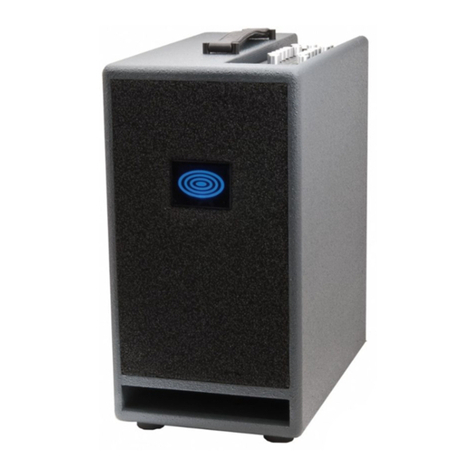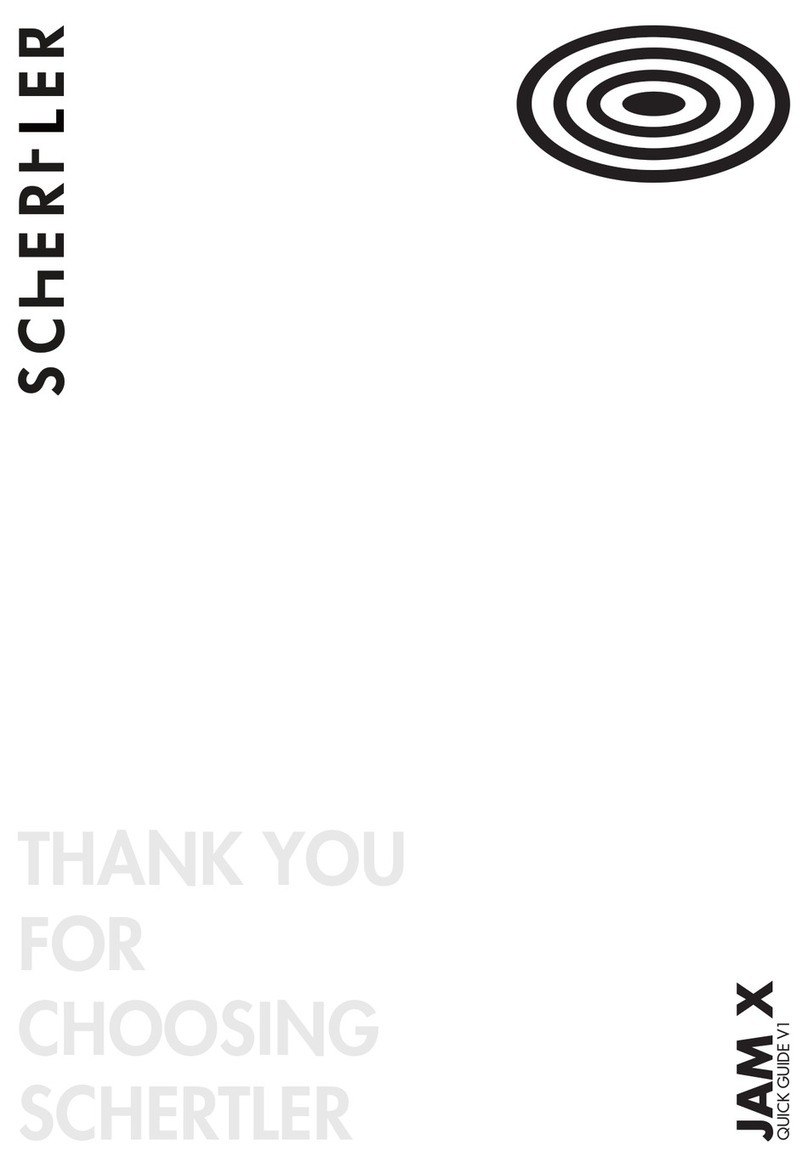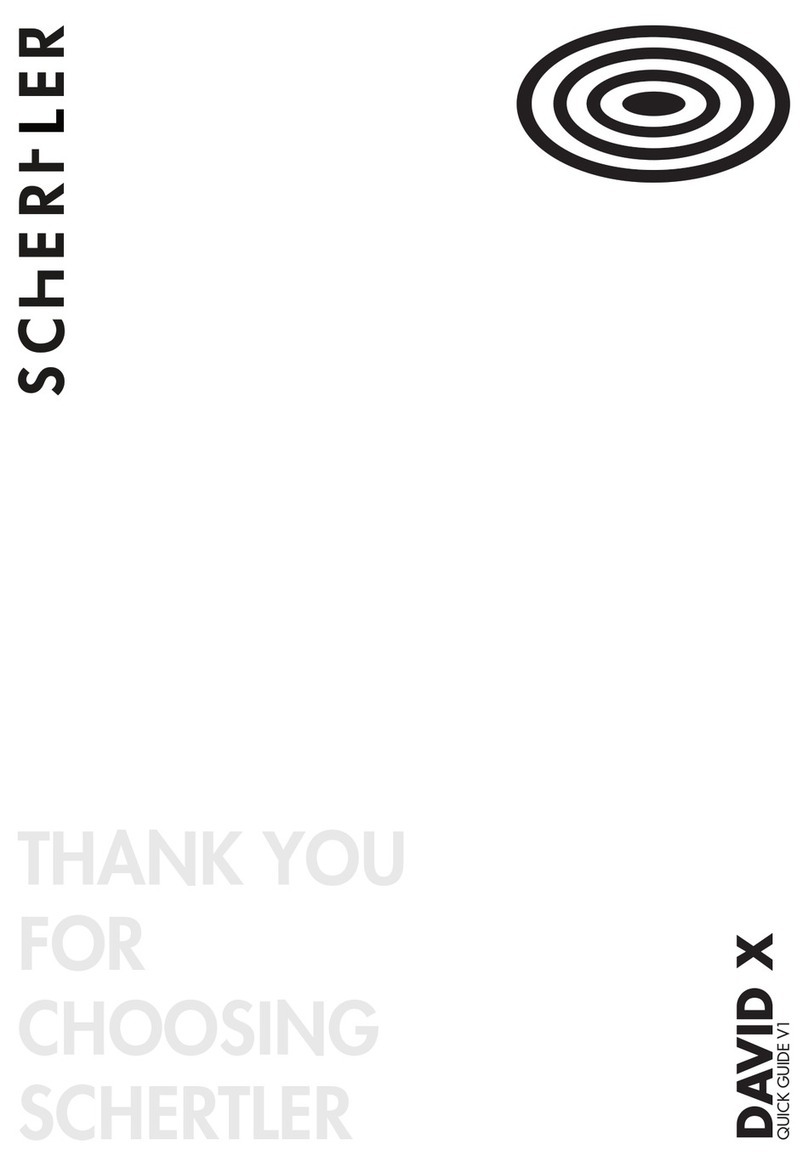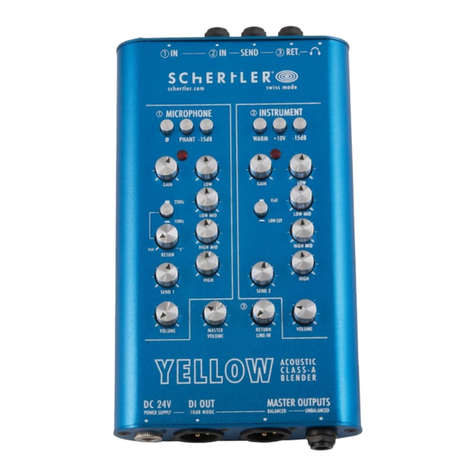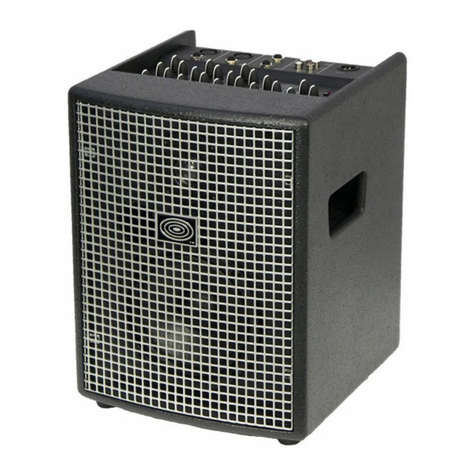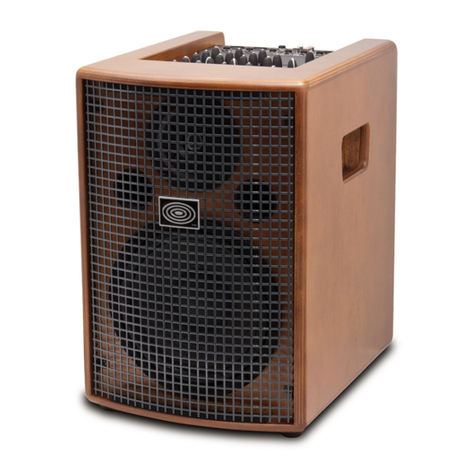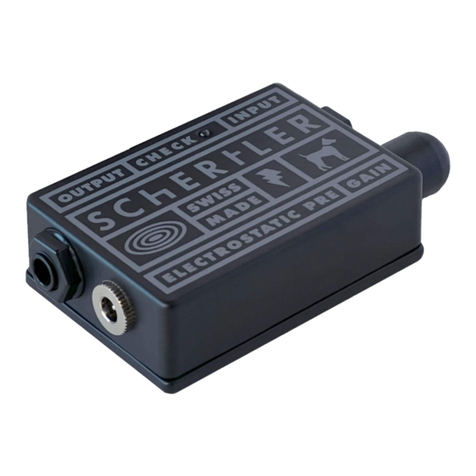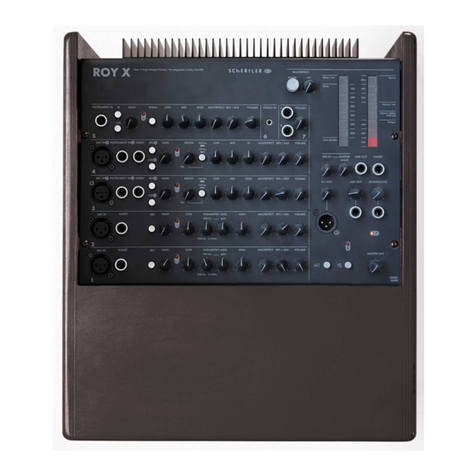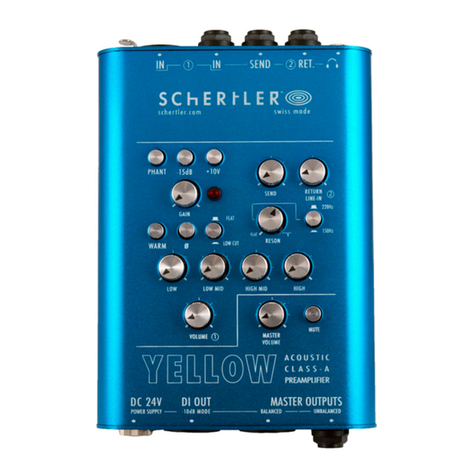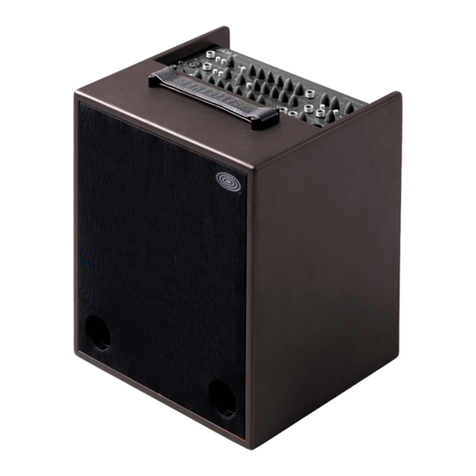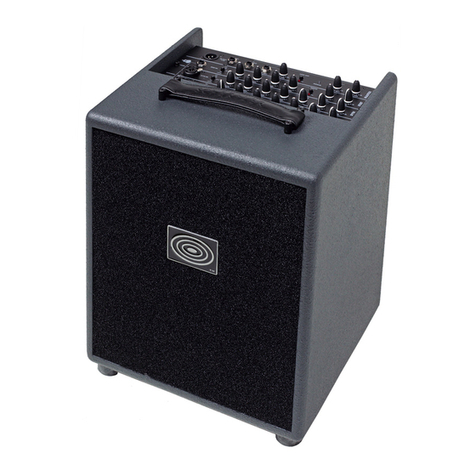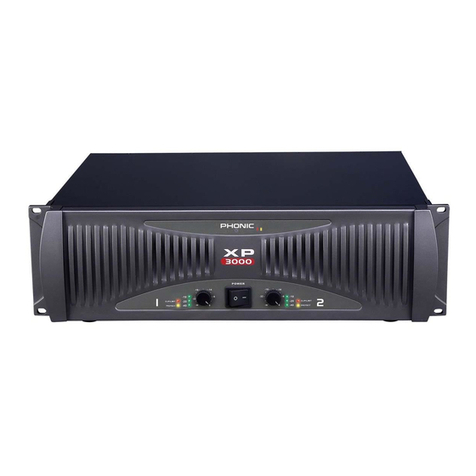The PHASE button (4.), labeled ø, swaps the “hot” and “cold” aspects of the input signal,
inverting the signal’s phase 180°. This can be helpful if, for example, two microphones
are positioned at a distance, or reverse-faced (i.e. bottom and top miking for snare drum
reproduction). Depressing the ø button on one of the mics means that the reverse-faced
mic will get “in phase”, or a distantly placed mic (for certain frequencies at least), will
become “better” in phase with a second mic. However, the ø button position is subjective
and the results really need to be evaluated by listening.
Depressing the P48 button (5.) (red light) delivers 48V of phantom power to the
microphone, which, in most cases will be a condenser mic or an active ribbon mic. A
dynamic mic cannot usually “see” phantom power (as its name suggests), but passive
ribbon mics could be permanently damaged by it.
Only use this button for mics that you know for certain need phantom power in order to
work. Also be aware that the internal circuitry raises the 48V slowly, in order to avoid loud
“pops” and protect the microphones. Therefore, about 10 seconds are needed before the
condenser mic will work fully.
The low cut button (7.), labeled ƒ, limits low frequencies at 100Hz/second order, cutting
out unwanted low frequencies from “boomy” signals. This lter can also be helpful in
shaping signals from smaller instruments (violin, mandolin etc).
The unit’s insert works in a similar way to that on other mixers, but offers some extra
possibilities due to an additional bypass switch.
If the INSERT DIRECTOUT (8.) button is not depressed (i.e. off, white light), the signal
will not be interrupted by the insertion of a phone jack into the Insert connector (9.). In
this instance, the insert connection works as a sleeve out or “dry line out post input amp”.
You can connect a simple mono phone jack or a stereo phone jack to the insert. The
unbalanced line signal will be transmitted through the “tip” of the phone jack.
If the INSERT DIRECTOUT button is depressed (i.e. on, red light), the signal in the mixer
will be interrupted and the insert will work in the usual way: By connecting a mono jack,
you will get the simple output line signal on the “tip”. By connecting a standard stereo
phone jack, you get the (output) signal from the “tip” (send) and the return signal will be
connected to the mixer through the “ring” (return) of the jack.
Resonance lter
The resonance lter is a kind of notch lter, but one that is gradually adjustable over its
attenuation level. If the lter is set to the “at” position during recording it will be totally
bypassed, thus having no effect on the incoming signal.
This lter is designed to avoid, or at least attenuate, feedback on acoustic instruments
that are mic’d up in live situations using pickups such as the legendary SCHERTLER
DYN series. A Double Bass or ‘Cello might get in resonance at ca. 150 Hz, whereas
guitars and similar musical instruments will do so at ca. 240 Hz. The Q is very high,
cutting out a very narrow band at the respective frequency.
ART48-MICIN/MIC-ULN
